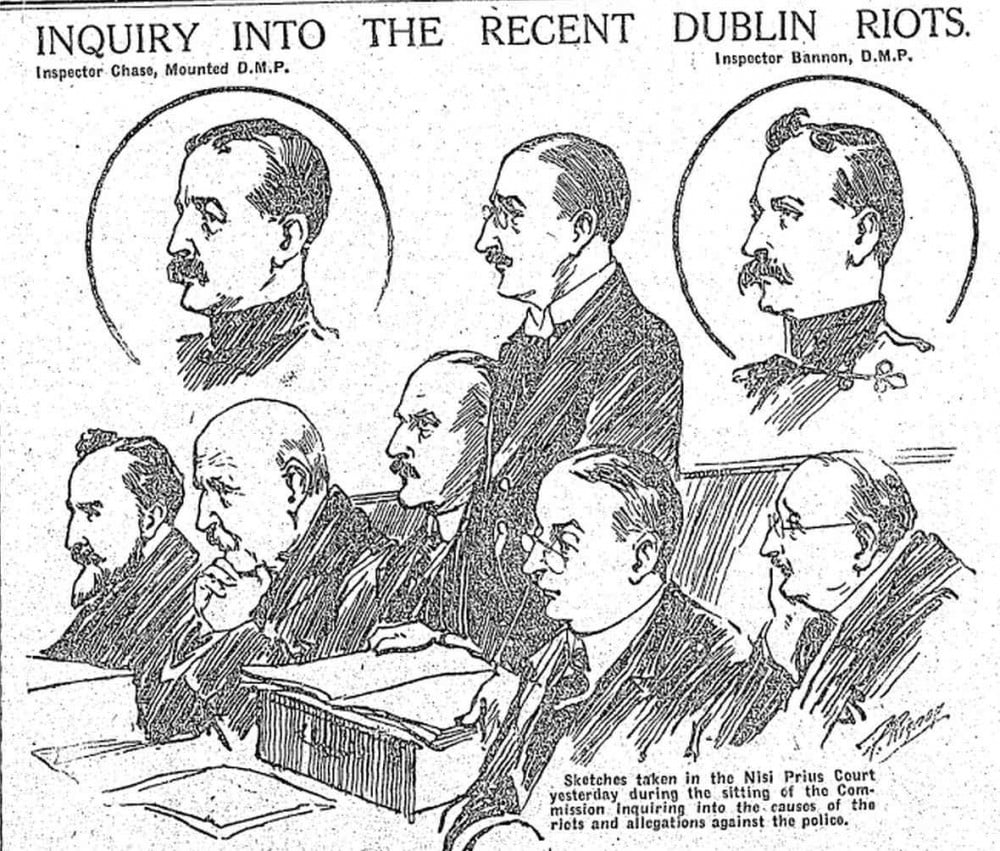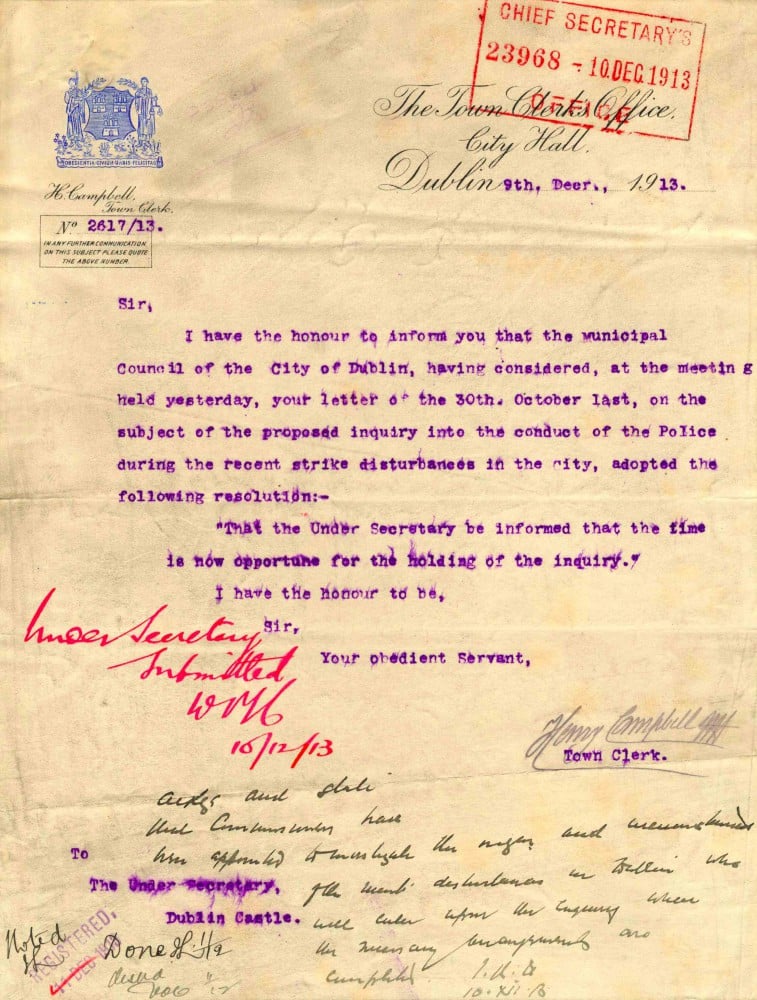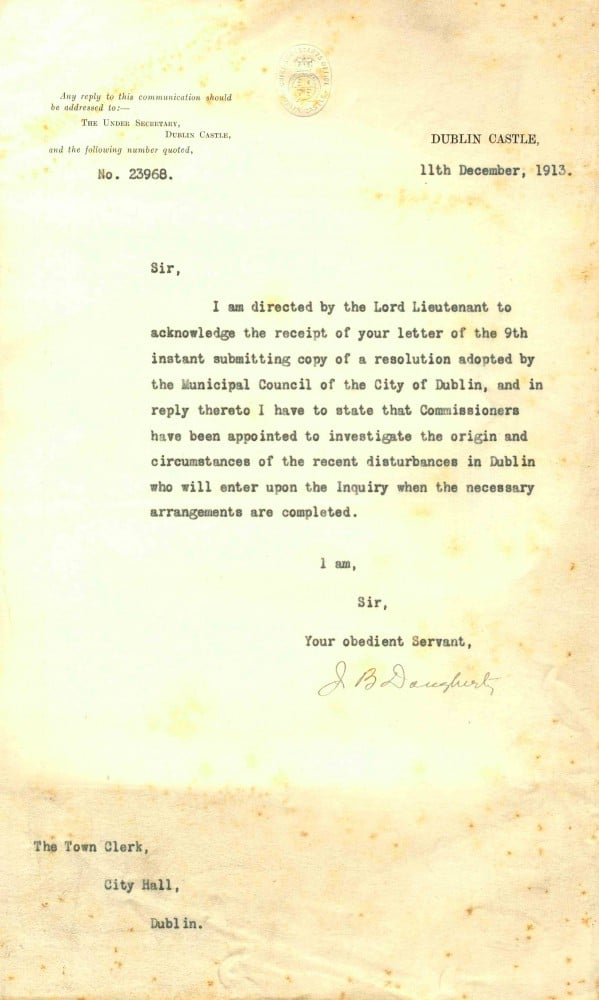Open warfare in Dublin city
Police allege brutality on the part of strikers
‘It was open war and as dangerous as a battlefield’, Inspector Campbell of the Dublin Metropolitan Police explained as the commission of inquiry into the conduct of the police at the strike disturbances in August and September opened in the Four Courts in Dublin.
The principal incidents that led to the establishment of the commission took place on the last weekend in August, 1913, when rioting took place across Dublin.
Further testimony from the police described scenes all across the city – from Ringsend to Marlborough Street and far beyond – as ‘fierce and appalling’. It was claimed that police were met with a fusillade of bricks, jam-pots, pokers, sewer pipes, bottles and frying pans from the balconies of houses.

(Photo: The Irish Independent, 6 January 1914)
A succession of police witnesses told the tribunal that they had been attacked repeatedly by strikers and their supporters and had had no option but to defend themselves.
Police superintendents told the commission that they feared for the lives of their men and were obliged to order a succession of battle-charges to disperse the crowds and to confront the rioters.
Labour leaders in Dublin have boycotted the inquiry and yesterday staged a series of street meetings in opposition to its proceedings.
The first meeting took place on Sackville Street where nationalists and suffrage activists, including Bulmer Hobson and Countess Markievicz, addressed the crowd.
Bulmer Hobson told the crowd that the inquiry being held in the Four Courts was ‘nothing short of a farce – an inquiry simply to whitewash the police’. Mr. Hobson said that they all knew that the inquiry was constituted in order to excuse the police atrocities.

|

|
(L) Letter stating that an inquiry into the conduct of the
police during the Lockout will be held. Signed by Henry Campbell,
Town Clerk, 9 December 1913
(R) A letter stating the date of the opening of the inquiry
into police conduct, 20 December 1913.
Click to enlarge. (Photos: National Archives of Ireland, CSO RP
1913)
Countess Markievicz endorsed Mr. Hobson’s words, saying that instead of a proper independent inquiry, the government had established an 'absurd caricature' of an inquiry: ‘Two little KCs were appointed to hold a prattling inquiry where everyone could say what he liked, for the evidence was not given on oath.’
Later, on another part of Sackville Street, the trade union leader, James Larkin, also condemned the inquiry. He told the crowd that he had said twenty weeks ago that William Martin Murphy had conspired with the Dublin Castle authorities to bring out the police to baton quiet citizens and he had been proven correct.
Hearings at the commission are continuing this week in the Four Courts.





















